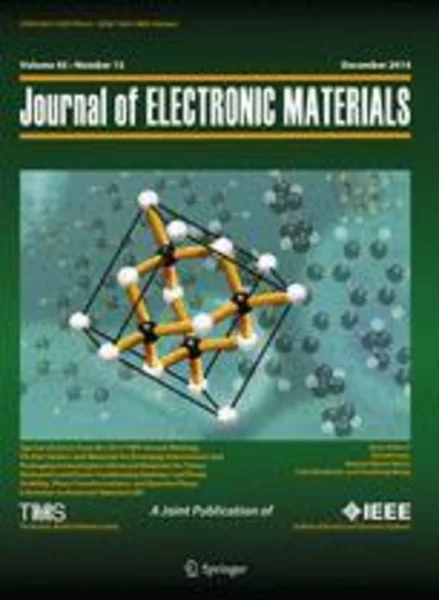-
thermal cycling reliability of sn-ag-cu solder interconnections. part 1: effects of test parameters
جزئیات بیشتر مقاله- تاریخ ارائه: 1392/07/24
- تاریخ انتشار در تی پی بین: 1392/07/24
- تعداد بازدید: 1021
- تعداد پرسش و پاسخ ها: 0
- شماره تماس دبیرخانه رویداد: -
the work presented in part 1 of this study focuses on identifying the effects of thermal cycling test parameters on the lifetime of ball grid array (bga) component boards. detailed understanding about the effects of the thermal cycling parameters is essential because it provides means to develop more efficient and meaningful methods of reliability assessment for electronic products. the study was carried out with a single package type (bga with 144 solder balls), printed wiring board (eight-layer build-up fr4 structure), and solder interconnection composition (sn-3.1ag-0.5cu) to ensure that individual test results would be comparable with each other. the effects of (i) temperature difference (δt), (ii) lower dwell temperature and lower dwell time, (iii) mean temperature, (iv) dwell time, and (v) ramp rate were evaluated. based on the characteristic lifetimes, the thermal cycling profiles were categorized into three lifetime groups: (i) highly accelerated conditions, (ii) moderately accelerated conditions, and (iii) mildly/nonaccelerated conditions. thus, one might be tempted to use the highly accelerated conditions to produce lifetime statistics as quickly as possible. however, to do this one needs to know that the failure mechanisms do not change from one lifetime group to another and that the failure mechanisms correlate with real-use failures. therefore, in part 2 the observed differences in component board lifetimes will be explained by studying the failure mechanisms that take place in the three lifetime groups.
مقالات جدیدترین رویدادها
-
استفاده از تحلیل اهمیت-عملکرد در ارائه الگوی مدیریت خلاقیت سازمانی و ارائه راهکار جهت بهبود
-
بررسی تاثیر ارزش وجوه نقد مازاد بر ساختار سرمایه شرکت های پذیرفته شده در بورس اوراق بهادار تهران
-
بررسی تأثیر سطح افشای ریسک بر قرارداد بدهی شرکت های پذیرفته شده در بورس اوراق بهادار تهران
-
بررسی تأثیر رتبه بندی اعتباری مبتنی بر مدل امتیاز بازار نوظهور بر نقد شوندگی سهام با تأکید بر خصوصی سازی شرکت ها
-
تأثیر آمیخته بازاریابی پوشاک ایرانی بر تصویر ذهنی مشتری پوشاک ایرانی (هاکوپیان)
-
معرفی و مقایسه روش های تعیین سرفاصله در حمل و نقل همگانی
-
چگونگی ایفای نقش بانک مرکزی در بازارهای ارز و پول
-
تحلیل پایداری قطار شهری شیراز با استفاده از نرم افزار twofs و مقایسه با روابط تجربی
-
natural convection from inclined plates to gases and liquids when both sides are uniformly heated at the same temperature
-
effect of near- field ground motions on the stability of embankment dams
مقالات جدیدترین ژورنال ها
-
مدیریت و بررسی افسردگی دانش آموزان دختر مقطع متوسطه دوم در دروان کرونا در شهرستان دزفول
-
مدیریت و بررسی خرد سیاسی در اندیشه ی فردوسی در ادب ایران
-
واکاوی و مدیریت توصیفی قلمدان(جاکلیدی)ضریح در موزه آستان قدس رضوی
-
بررسی تاثیر خلاقیت، دانش و انگیزه کارکنان بر پیشنهادات نوآورانه کارکنان ( مورد مطالعه: هتل های 3 و 4 ستاره استان کرمان)
-
بررسی تاثیر کیفیت سیستم های اطلاعاتی بر تصمیم گیری موفق در شرکتهای تولیدی استان اصفهان (مورد مطالعه: مدیران شرکتهای تولیدی استان اصفهان)
-
بررسی تاثیر چابکی سازمانی و خلاقیت سازمانی بر عملکرد شغلی کارکنان بانک توسعه صادرات ایران
-
اصطلاحات نجومی و بازتاب آن در شعر برخی از شاعران
-
«فمنیسم پسااستعماری و جنبش متقدم زنان در ایران» دیگری سازی و مناسبات سلطه
-
مدلی برای تحقق اهداف اقتصاد مقاومتی در بیمارستان (مطالعه موردی: بیماران مبتلا به بیماری های خاص)
-
the study of electron-orbital properties of bipolar energy of complex (2,6-diaminopyridinium bis (4-hydroxy-pyridine-2,6,6-dicarboxylate) dihydrate chromate iii))) with alteration of ligands by computational methods




سوال خود را در مورد این مقاله مطرح نمایید :